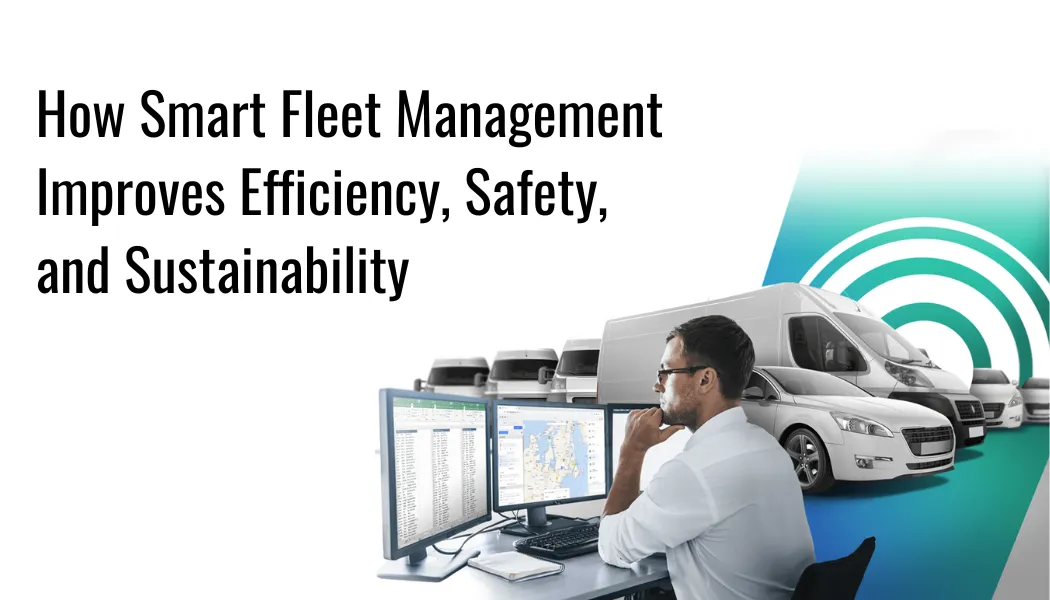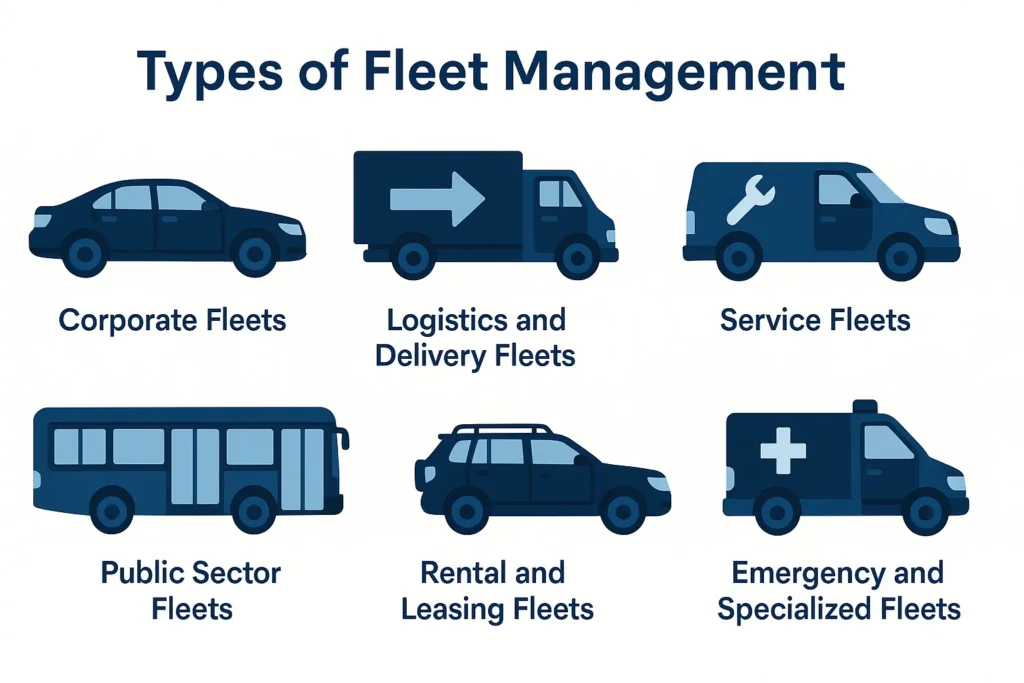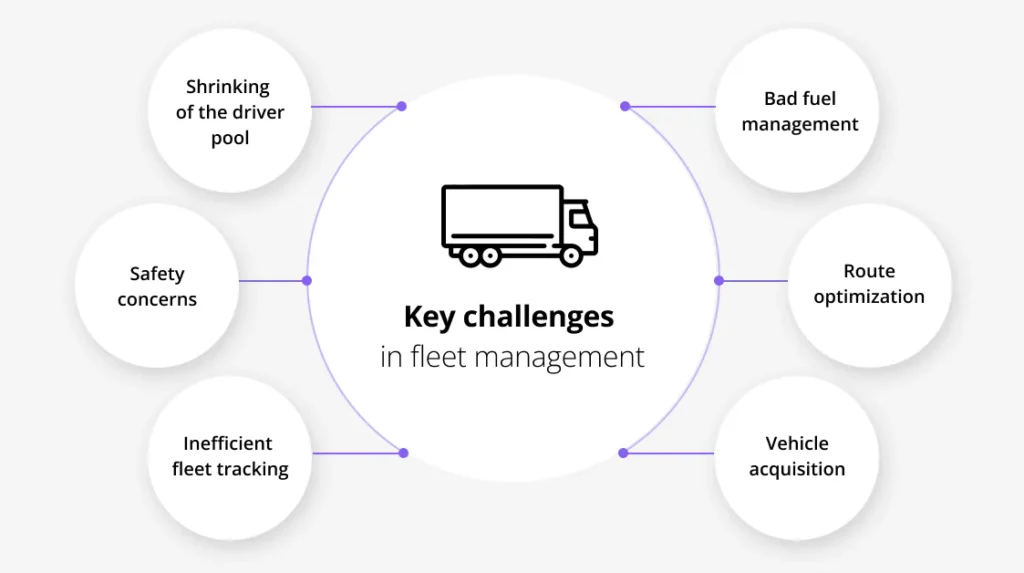
Executive Summary
Fleet management is the strategic administration and oversight of a company’s vehicles, aimed at ensuring operational efficiency, reducing costs, and maintaining safety and compliance. It involves managing all aspects of a fleet—vehicle acquisition, maintenance, tracking, driver management, fuel monitoring, and regulatory adherence—while optimizing performance and minimizing risks.
In today’s fast-paced business environment, organizations with delivery services, logistics operations, or field-based teams must manage their vehicles effectively. Proper fleet management allows businesses to streamline operations, extend the lifespan of vehicles, enhance driver safety, and improve overall productivity. This guide explores the concept, processes, strategies, benefits, challenges, tools, and future trends in fleet management.
Table of Content
Introduction
Vehicles are often among the most critical assets in an organization. They enable operations, support logistics, and provide essential services. However, managing a fleet of vehicles—whether it’s five cars or hundreds of trucks—requires more than assigning vehicles to drivers.
Fleet management is a comprehensive discipline that combines operational planning, cost management, safety oversight, and technology integration. By systematically monitoring vehicle usage, maintenance, and performance, organizations can reduce downtime, improve service delivery, and increase profitability.
Modern fleet management is not just about vehicles—it’s about integrating people, processes, and technology to create a smooth, efficient, and sustainable operation.
Core Concepts of Fleet Management
- Vehicle Acquisition and Lifecycle Management
Selecting, procuring, and managing vehicles throughout their lifecycle—from purchase or lease to eventual resale or disposal—is a key component of fleet management. Lifecycle management ensures the fleet remains operational, cost-efficient, and compliant with safety standards. - Maintenance Management
Vehicles require regular preventive maintenance and timely repairs to prevent breakdowns and costly downtime. Maintenance management includes scheduling services, inspections, and tracking repair history. - Fuel Management
Fuel is one of the largest expenses for fleet operations. Monitoring fuel consumption, reducing wastage, and optimizing fuel efficiency are crucial for cost control and environmental sustainability. - Telematics and Vehicle Tracking
Telematics technology uses GPS and onboard sensors to provide real-time data on vehicle location, speed, performance, and driver behavior. This data helps in route optimization, monitoring efficiency, and ensuring safety. - Driver Management
Managing drivers involves training, monitoring performance, ensuring compliance with licensing and safety standards, and promoting responsible driving behaviors to reduce risks. - Route Planning and Optimization
Efficient route planning minimizes travel time, fuel consumption, and vehicle wear. Optimizing delivery or service routes also improves customer satisfaction and operational efficiency. - Regulatory Compliance
Fleet management includes ensuring vehicles comply with local, state, and federal regulations, such as licensing, emissions standards, safety inspections, and insurance requirements. - Cost Management
Tracking and controlling operational costs, including fuel, maintenance, insurance, and repairs, is vital to maintaining profitability. - Safety and Risk Management
Implementing measures to prevent accidents, vehicle theft, and liability issues protects employees and the organization while reducing costs related to claims and repairs.
Types of Fleet Management

- Corporate Fleets
Vehicles owned by companies for employee transportation, client visits, or internal operations. Examples include company cars for sales teams or executive transportation services. - Logistics and Delivery Fleets
Vehicles used to transport goods, parcels, or cargo. Delivery companies like FedEx and DHL rely heavily on effective fleet management for timely and cost-effective operations. - Service Fleets
Vehicles used by field service teams for maintenance, installation, or repair services, such as utility, plumbing, or HVAC companies. - Public Sector Fleets
Government and municipal vehicles used for public services, including buses, garbage trucks, police vehicles, and ambulances. - Rental and Leasing Fleets
Vehicles provided to customers under rental or lease agreements. Fleet management ensures maintenance, tracking, and availability for clients. - Emergency and Specialized Fleets
Vehicles like fire trucks, ambulances, or police cars that require specialized maintenance, monitoring, and rapid deployment.
Key Processes in Fleet Management
1. Vehicle Acquisition and Procurement
Fleet managers assess operational needs and select vehicles suitable for purpose, cost, and efficiency. This includes evaluating purchase versus lease options, total cost of ownership, and expected lifespan.
2. Preventive Maintenance and Repairs
Scheduling regular inspections, oil changes, tire rotations, and other services prevents unexpected breakdowns. A well-maintained fleet reduces downtime and extends vehicle lifecycles.
3. Fuel Monitoring and Optimization
Fuel management involves tracking consumption, identifying inefficiencies, and adopting strategies such as fuel cards, eco-driving programs, or route optimization to lower expenses.
4. Fleet Tracking and Telematics
GPS tracking and telematics monitor vehicle location, speed, idle time, and performance. Real-time data improves safety, reduces unauthorized usage, and informs operational decisions.
5. Driver Management and Training
Fleet managers ensure drivers are licensed, trained, and compliant with safety standards. Monitoring behavior, providing coaching, and enforcing policies help reduce accidents and improve efficiency.
6. Route Planning and Scheduling
Optimized routing minimizes travel time, fuel consumption, and vehicle wear. Software tools allow managers to simulate routes, plan delivery schedules, and respond to traffic or weather changes.
7. Regulatory Compliance
Maintaining documentation, scheduling inspections, and adhering to safety standards ensures vehicles meet legal and industry requirements, avoiding penalties and legal complications.
8. Expense Tracking and Reporting
Monitoring costs for fuel, maintenance, insurance, and repairs enables managers to identify savings opportunities and make informed financial decisions.
Benefits of Fleet Management
- Operational Efficiency: Streamlines vehicle use and scheduling for maximum productivity.
- Cost Reduction: Optimizes fuel consumption, maintenance, and resource utilization.
- Vehicle Longevity: Preventive maintenance extends fleet lifespan.
- Driver Safety: Promotes responsible driving and reduces accidents.
- Regulatory Compliance: Ensures vehicles meet all legal and safety requirements.
- Data-Driven Decisions: Real-time insights help managers optimize routes, maintenance, and resource allocation.
- Environmental Sustainability: Reduces emissions through fuel efficiency and eco-friendly practices.
Smart fleet management doesn’t operate in a vacuum — it thrives on efficient resource use, strong workforce coordination, and data-informed planning.
To explore how organizations strategically align people and assets, read What Is Resource Management: Understanding Types, Processes, and Tools.
For a broader look at how multiple transportation or logistics projects work together, check out The Ultimate Guide to Program Management: Processes, Tools, and Strategies.
And to see how companies manage employee productivity and scheduling in logistics environments, dive into What Is Workforce Management: Definition, Process, and Benefits Explained.
Fleet Management Strategies
- Telematics Integration
Using GPS and sensors to track vehicle location, performance, and driver behavior. This enables real-time monitoring and proactive maintenance. - Preventive Maintenance Programs
Scheduling regular inspections and maintenance to prevent unexpected downtime and costly repairs. - Driver Training and Safety Programs
Educating drivers on safe driving, fuel-efficient practices, and compliance with traffic regulations. - Fuel Management Strategies
Implementing fuel cards, monitoring fuel usage, and optimizing routes to reduce wastage. - Asset Utilization Optimization
Ensuring vehicles are fully utilized and avoiding idle time or underuse. - Sustainable Fleet Practices
Incorporating electric or hybrid vehicles and adopting eco-friendly practices to reduce environmental impact. - Data-Driven Decision Making
Leveraging analytics to monitor fleet performance, forecast maintenance needs, and optimize costs. - Outsourcing vs. In-House Management
Deciding whether fleet operations should be handled internally or through third-party fleet management providers.
Tools and Technologies in Fleet Management
- Fleet Management Software: Verizon Connect, Geotab, Samsara, Fleet Complete, Omnitracs
- Telematics Systems: GPS tracking, engine diagnostics, performance monitoring
- Maintenance Management Tools: Fleetio, Chevin Fleet Solutions for scheduling and tracking maintenance
- Fuel Management Platforms: Fuel cards and monitoring software
- Driver Behavior Monitoring Tools: Dashcams, in-cab sensors, driver scoring systems
- Route Planning Software: Route4Me, OptimoRoute, Google Maps API
Challenges in Fleet Management

- Rising operational and maintenance costs
- Fuel price fluctuations and efficiency challenges
- Ensuring driver safety and compliance
- Managing vehicle downtime and repairs
- Integrating telematics and analytics systems
- Regulatory compliance across multiple jurisdictions
- Environmental sustainability and emission regulations
Key Metrics and KPIs
- Total Fleet Cost: Comprehensive operational expenses including fuel, maintenance, insurance, and repairs.
- Fuel Efficiency: Average fuel consumption per vehicle or mile.
- Maintenance Compliance: Percentage of vehicles adhering to preventive maintenance schedules.
- Vehicle Downtime: Time vehicles are unavailable due to repairs or service.
- Driver Performance: Metrics such as speed, braking, idle time, and route adherence.
- Asset Utilization: Percentage of fleet actively in use versus idle.
- Accident Rate: Frequency of accidents or incidents per vehicle.
Real-World Applications
- Logistics and Delivery Companies
Optimize delivery routes, track parcels, and reduce operational costs. - Public Transportation
Manage buses, trams, and municipal vehicles efficiently to ensure reliability and safety. - Field Service Organizations
Enable technicians to reach clients efficiently, ensuring timely service delivery. - Corporate Vehicle Fleets
Oversee employee travel, sales team vehicles, and executive transportation. - Emergency Services
Coordinate ambulances, fire trucks, and police vehicles for rapid response. - Rental and Leasing Companies
Track vehicle usage, maintenance schedules, and ensure client satisfaction.
Common Misconceptions
- Fleet Management Is Only About Vehicles: It also involves drivers, routes, fuel, compliance, and costs.
- Manual Tracking Is Enough: Technology and telematics are critical for efficiency and insights.
- Only Large Organizations Need Fleet Management: Small and medium businesses benefit significantly.
- Fleet Management Only Reduces Costs: It also enhances safety, productivity, and compliance.
- Vehicles Alone Determine Efficiency: Driver behavior, maintenance, and route planning are equally important.
Future of Fleet Management
- AI-Powered Telematics: Predictive maintenance, route optimization, and fuel efficiency using AI.
- Electric and Hybrid Fleets: Eco-friendly vehicles for sustainability and cost savings.
- Autonomous Vehicles: Integration of self-driving technology for logistics and delivery operations.
- IoT-Enabled Fleet Monitoring: Real-time data on vehicle health, performance, and utilization.
- Cloud-Based Management: Centralized platforms for monitoring fleets across locations.
- Sustainable Practices: Reducing carbon footprint and adopting green logistics strategies.
Conclusion
Fleet management is a strategic discipline that goes beyond simply overseeing vehicles. It integrates technology, processes, and human resources to maximize efficiency, reduce costs, ensure safety, and maintain compliance. Effective fleet management transforms vehicle operations into a competitive advantage, enabling organizations to meet operational goals, deliver superior services, and embrace sustainable practices.
Organizations that adopt comprehensive fleet management strategies can optimize resources, improve driver performance, extend vehicle lifespans, and achieve measurable operational improvements. In an increasingly data-driven and sustainability-conscious world, fleet management is not optional—it is essential.


